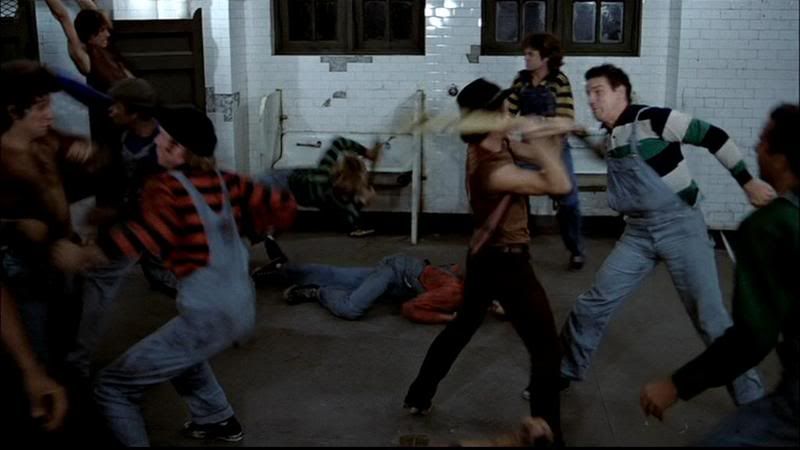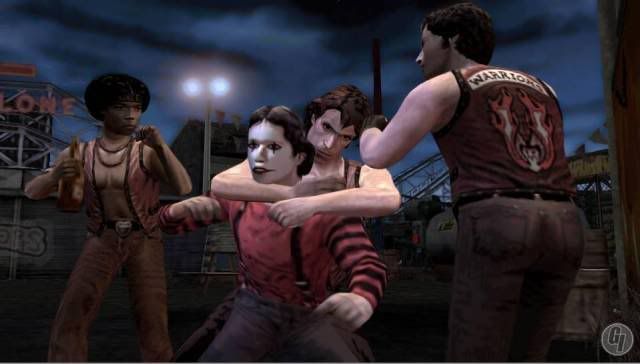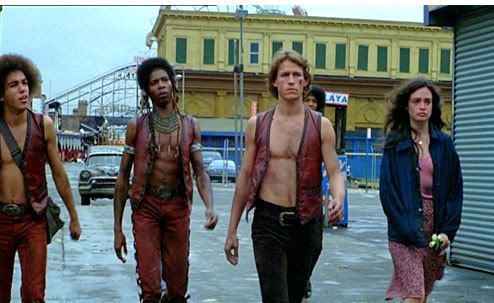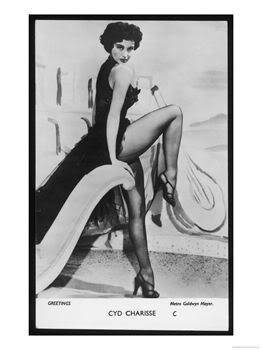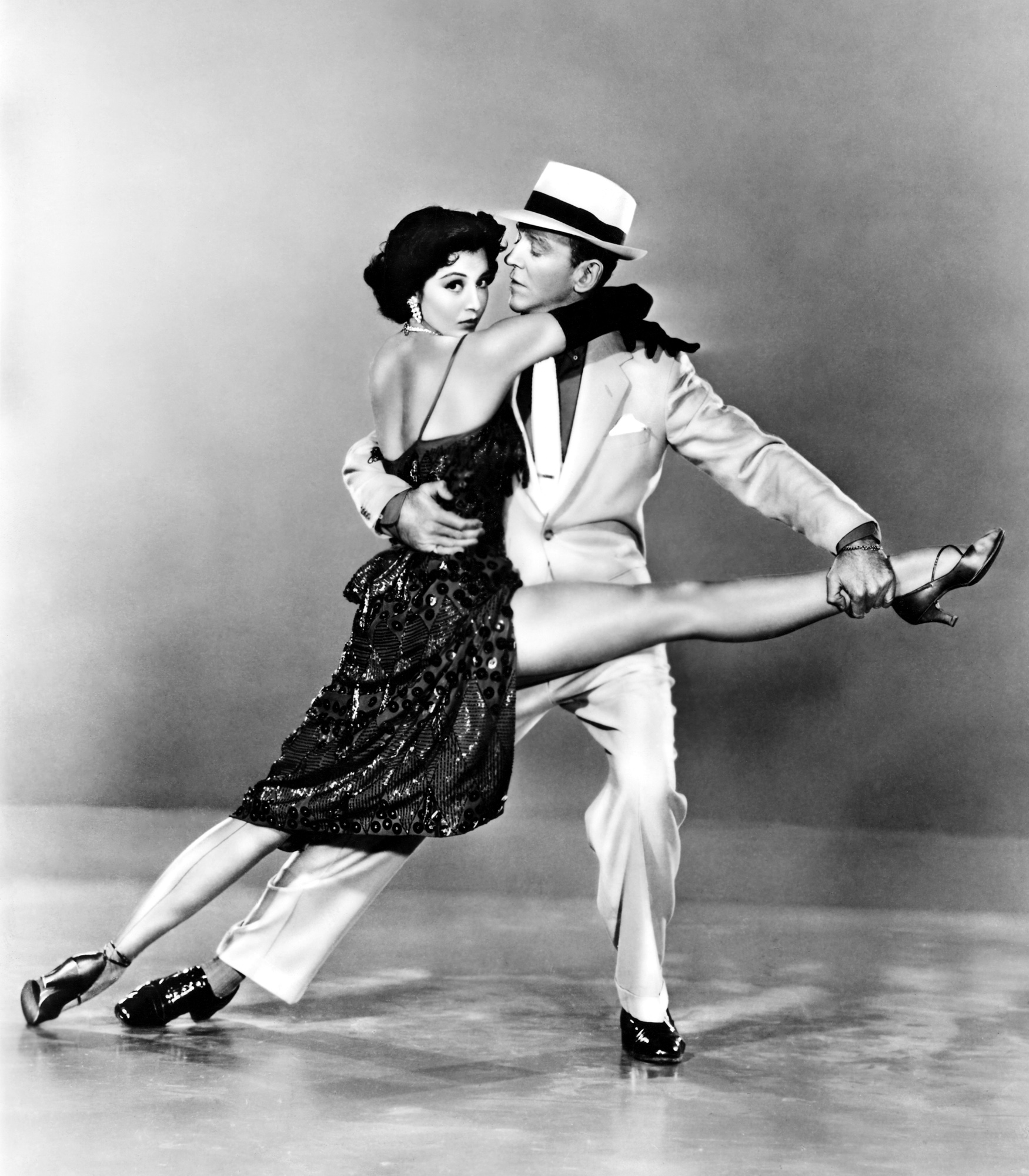Dr. X posts this from that big party in Oxnard:
"It was noted a few days ago that
Singin' in the Rain has significant therapeutic benefits. I can attest to this from my own experience. In February I reluctantly became Florence Nightingale to a family of coughing, feverish, lethargic infectees. Morale was at rock bottom. As a last resort, I tried out our videotape of the movie Ebert, Kael and many others have named as the greatest musical ever. The effect was instantaneous and magical.
"
Singin' in the Rain is now viewed almost every day in our household, and is rapidly becoming a founding text of my boys' childhood. Watching it again and again I have gained a few shreds of insight into the alchemy that made this such a fantastic movie while other films with equally-talented casts (and better musical material fell flat. Hence, a few preliminary notes that may or may not inform or misinform my mapping of the representation of the text:
"1) Everyone had a nervous breakdown (all of these are from
the Wikipedia article).
- Donald O'Connor's 'Make 'em Laugh' is a legendary solo performance by one of the greatest song and dance men to ever come out of Vaudeville. He claimed to have worked it all out himself. After filming it he was hospitalized with exhaustion. The running up the wall bit wasn't a camera trick - he really did that, after rehearsing in a harness.
- Gene Kelly's signature performance of the title tune was done while he had a fever of 103.
- 19 year-old Debbie Reynolds, who before this movie could not dance was so tormented by Gene Kelly that Fred Astaire found her weeping in frustration under a piano. Astaire tutored her, with incredible results. If you watch 'Good Morning' she's somehow keeping up with Kelly and O'Connor. Her feet were bleeding. Stressful? Unpleasant? Reynolds ranked making this movie up there with childbirth.
"2) A lot of the music is quite mediocre. The movie recycles
a bunch of old Freed and Brown songs. Of these, "Singin' in the Rain" is the best, and the most recycled. A late 20s number, it first shows up on film in
The Hollywood Revue of 1929. Others, such as "Broadway Melody" and "All I Do is Dream of You" are suitably mediocre. If they were
good songs we might not notice how well Gene Kelly is dancing, or how hot Cyd Charisse is.
"3) Cyd Charisse - the femme fatale in the big Broadway number - was the thinking man's (or foot fetishist's) Marilyn Monroe. Remember when I was talking about heat so hot that it would be impossible to comprehend its hotness? Cyd Charisse was hotter than that.
"4) In "All I Do is Dream of You" Debbie Reynolds succeeds in
irritably performing a light dance number. As an acting novelty I rank this up there with Lee Van Cleef's ability to
eat menacingly in
For a Few Dollars More.
"5) The catchiest number, "Moses Supposes", is not by Freed and Brown, but by Roger Edens with lyrics by the estimable
Comden and Green (who glued the movie together and later scored the show for Broadway). If you care even a little bit about dance, you have to view
"Moses Supposes" as the real climax of the film, one of the great danceoffs of all time. Watch the continuous take from 2:06 to 2:33...Kelly and O'Connor were this close to killing each off-camera, but God that's good dancing.
"6) Um, yeah, Donald O'Connor. You could write a book about Donald O'Connor. Someone should. Here's the thing about Donald O'Connor: he could do anything. Need a song-and-dance guy? No problem. Male lead? Sure. Comic ensemble player? No problem. Maybe action hero would have been a stretch. Kelly called him 'The O'Connor' (
this wonderful website gives him his due).
"7) Having watched too much of Gene Kelly's work (
Invitation to the Dance, anyone?) it is clear that one of the keys to the film's success is that someone held Kelly's self-destructive tendencies in check. Kelly was as fine a song and dance lead as you could ask for...when he was moving. When he was standing still ("You Were Meant for Me") he delivered nothing. But he could kill you two other ways, too. He could get into artistic pretension the way some men get into the liquor cabinet (as in
Invitation to the Dance). And his diva-like behavior veered between abuse of others (O'Connor and Reynolds both complained about it) and paralysis. That said, his signature performance of the title song is impeccable.
"8)
Jean Hagen as Lena Lamont. In addition to playing hot, crazy, and commercially viable Lena with wit and verve, Hagen dubbed Debbie Reynolds dubbing Lena (and then it
gets weird). A shame she didn't get more big roles, she brought this one off perfectly.
"9) The movie is so self-referential many of its self-references refer to themselves. This makes the referentiality self-referencing in its referencialism.
"10) Ebert re-reviewed the movie in 1999, curiously omitting some of the more obvious structuralist points of reference (
here)."

